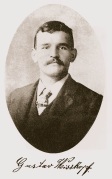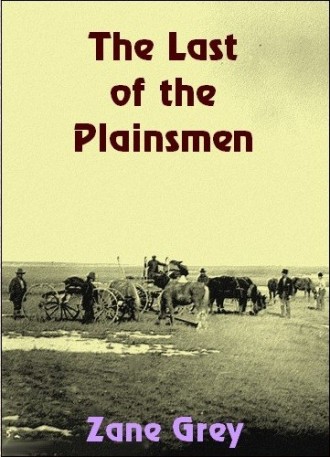Before the Wrights Flew, S. Randolph, G.P.Putnam’s Sons New York, 1966, p.101
"The date of the arrival of Buffalo Jones, hero of Zane Gray's novel, 'The Plainsman', is not known. But at some tim after the family had moved into their second home on Tunxis Hill, this colorful figure became intent upon pursuading Whitehead to undertake constructor of a helicopter. Whitehead did undertake it in accordance with Jones' instructions of what he wanted, but before the aircraft was completed, Jones had what he belived to be a better idea. He had his helicopter converted to a windwill! The wheel operated horizontally, carrying a number of planes on its pivots. As the wind turned the wheel, the planes on the windward side swung out to receive its full force, while those on the leeeward folded against the edge of the wheel. Whitehead's daughters tell of an ingenious method of securing his winter supply of fireplace wood which their father devised by connecting a saw to the windwill. The children, themselves, took a turn or two about on the wheel upon occasion."
Read the entire book free, here:
http://freeread.com.au/@RGLibrary/ZaneGrey/Novels/TheLastOfThePlainsmen.html
Jones is described in the Foreword as follows:
Buffalo Jones needs no introduction to American sportsmen, but to these of my readers who are unacquainted with him a few words may not be amiss.
He was born sixty-two years ago on the Illinois prairie, and he has devoted practically all of his life to the pursuit of wild animals. It has been a
pursuit which owed its unflagging energy and indomitable purpose to a singular passion, almost an obsession, to capture alive, not to kill. He has caught and broken the will of every well-known wild
beast native to western North America. Killing was repulsive to him. He even disliked the sight of a sporting rifle, though for years necessity compelled him to earn his livelihood by supplying the
meat of buffalo to the caravans crossing the plains. At last, seeing that the extinction of the noble beasts was inevitable, he mashed his rifle over a wagon wheel and vowed to save the species. For
ten years he labored, pursuing, capturing and taming buffalo, for which the West gave him
fame, and the name Preserver of the American Bison.
As civilization encroached upon the plains Buffalo Jones ranged slowly westward; and to-day an isolated desert-bound plateau on the north rim of the Grand Canyon of Arizona is his home. There his buffalo browse with the mustang and deer, and are as free as ever they were on the rolling plains.In the spring of 1907 I was the fortunate companion of the old plainsman on a trip across the desert, and a hunt in that wonderful country of yellow crags, deep canyons and giant pines. I want to tell about it. I want to show the color and beauty of those painted cliffs and the long, brown-matted bluebell-dotted aisles in the grand forests; I want to give a suggestion of the tang of the dry, cool air; and particularly I want to throw a little light upon the life and nature of that strange character and remarkable man, Buffalo Jones.
Happily in remembrance a writer can live over his experiences, and see once more the moonblanched silver mountain peaks against the dark blue sky; hear the lonely sough of the night wind through the pines; feel the dance of wild expectation in the quivering pulse; the stir, the thrill, the joy of hard action in perilous moments; the mystery of man's yearning for the unattainable.
As a boy I read of Boone with a throbbing heart, and the silent moccasined, vengeful Wetzel I loved. I pored over the deeds of later men—Custer and Carson, those heroes of the plains. And as a man I came to see the wonder, the tragedy of their lives, and to write about them. It has been my destiny —what a happy fulfillment of my dreams of border spirit!—to live for a while in the fast-fading wild environment which produced these great men with the last of the great plainsmen.
ZANE GREY




